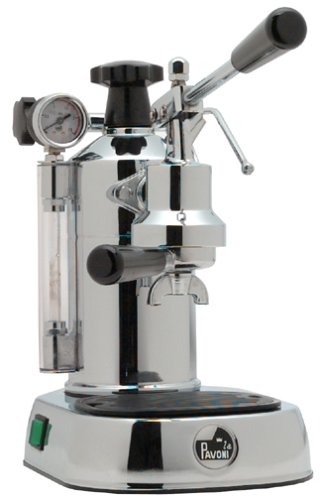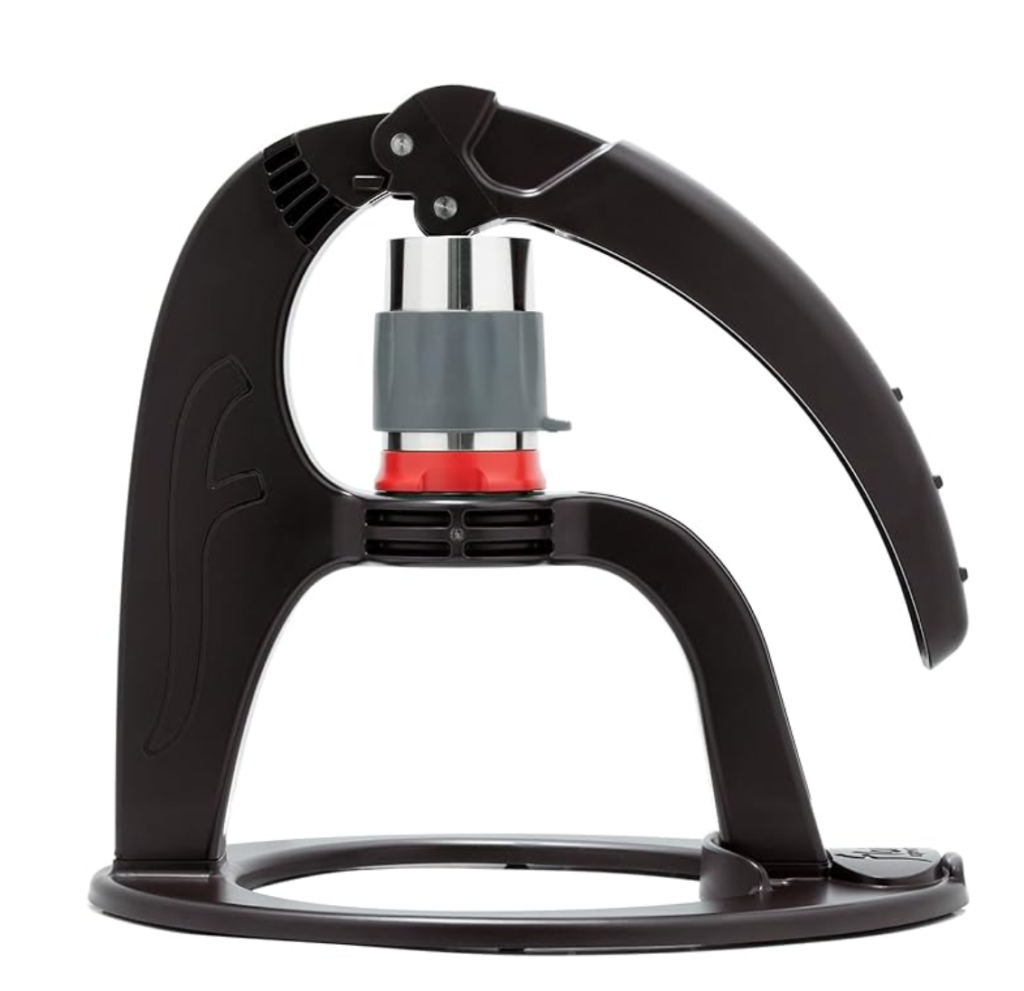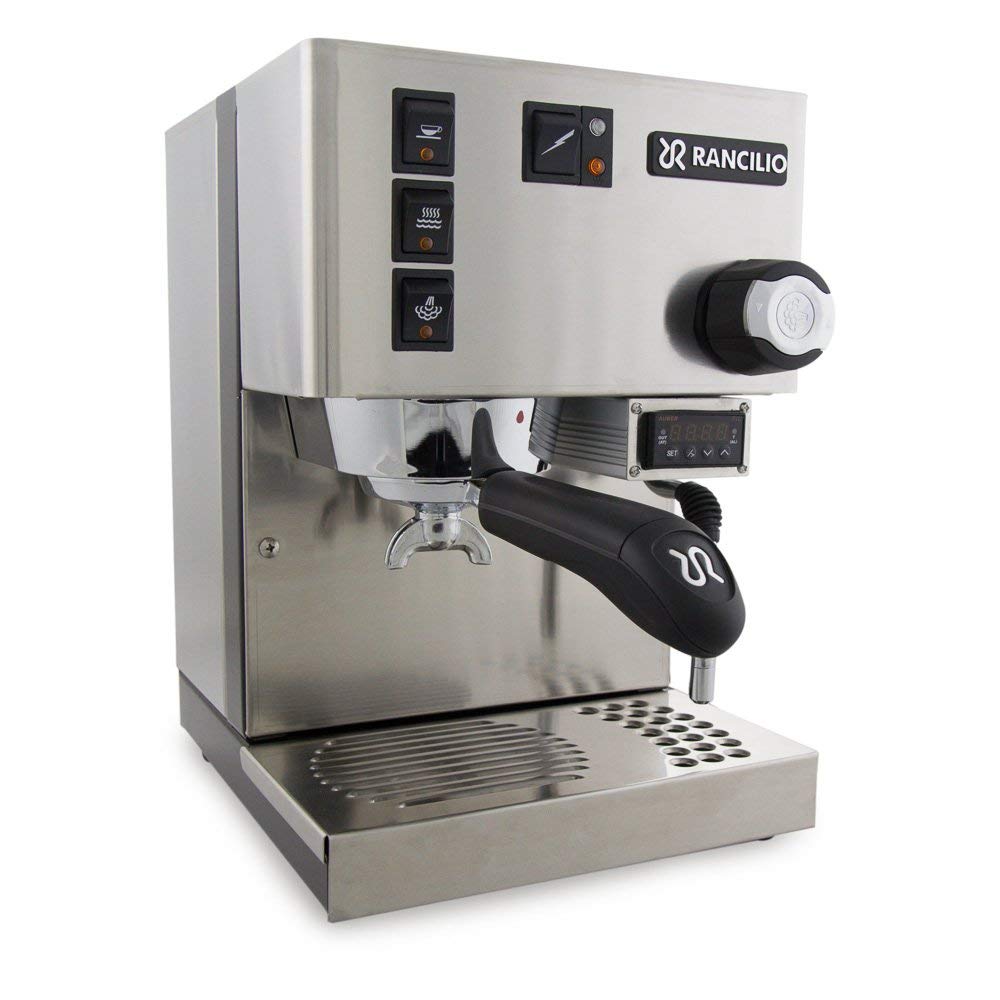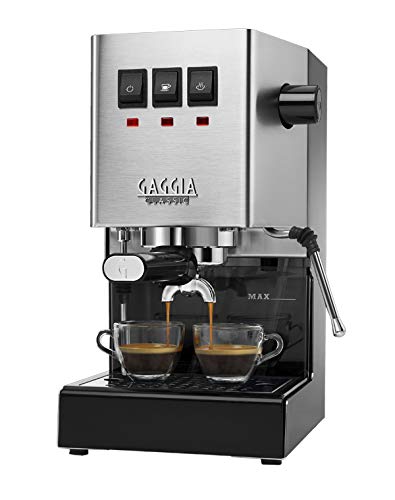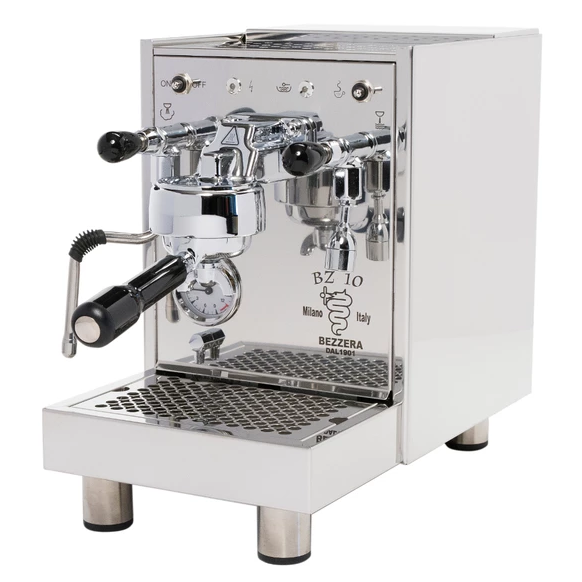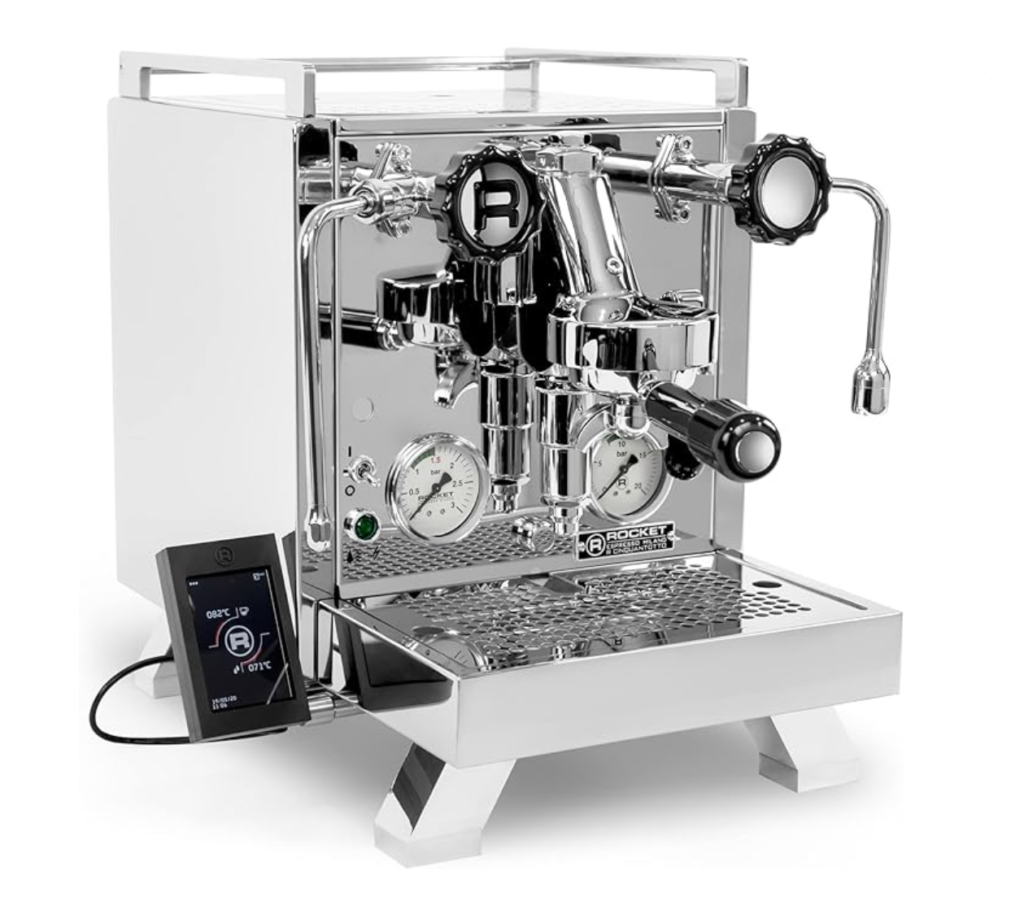Your cart is currently empty!
Which Home Machine?
updated 8/5/23
It has been a few years since this post has been updated and in effort to try and keep up with changing espresso machines and the current tech of our day, I have decided to keep it simple and streamline this post using espresso machines currently available on Amazon as examples.
Hopefully, after looking over some of these machines, you will come away with the answer to the question, “Which type of HOME espresso machine should I buy?“. This list is in no particular order and is more of a guide to the different types of home espresso machines that are on the market. If you are an experienced espresso drinker, we will try and highlight a few different features of machines that might help in a future machine purchase if necessary.
For ease of nomenclature, we will consider roughly 4 types of espresso machines: Manual, Semi-Automatic, Fully-Automatic and Pro-Sumer.
- Manual – The beans are ground and loaded in the portafilter by you (the user). The pressure created to dispense a quality shot comes from the force of the user. Meaning you literally have to move a lever up and down to get espresso to come out of the machine. Professional or commercial lever style espresso machines use a giant spring to assist in the lever pull pressure creation.
- Semi-Automatic – The beans are ground and loaded in the portafilter by the barista. Then, instead of pulling a lever, the barista toggles a switch that activates a mechanical pump to instantaneously deliver 9 bars of hot water through the ground coffee in the portafilter. Semi-Automatic machines also come in versions that are volumetric in design. This allows the barista to program shot times, since the machine knows ☺ how much water it has dispensed.
- Automatic or Fully-Automatic or Super-Automatic or even Super Duper Espress-o-Matic – Relax. Push a button. Walk away. Really, the only manual thing about these machines is the cleaning and up-keep. Once the user pushes a button, the machine takes over and will grind the beans and dispense an espresso shot. Whether it will froth milk automatically at your desired level or talk to your toaster is all in the fine details.
- Pro-Sumer – Similar to a Semi-Automatic, but typically better in construction. Normally, these models have a heat exchanger inside the boiler to allow you to pull a shot and steam milk at the same time. Some of the higher end or more expensive models are dual-boiler. One tank for the steam milk frothing and one tank for dispensing espresso shots. Many Pro-Sumer models utilize the e61 Grouphead and some are custom with volumetrics. These can also work ok in a low-volume eatery, but not ideal for a high-volume cafe or coffee shop.
The most important thing in choosing an espresso machine is making sure it has all the features you are looking for.
Of course it has to look good on your counter, then after that, make sure it will do what you need it to do. If you have a family of 7, morning milk based espresso drinkers, you might need to choose a Super-Automatic that has a milk jug style attachment on it as opposed to a frothing wand. Maybe you are flying solo on your coffee mission and want to dive into the intricacies of every coffee bean varietal known to man. A manual machine or semi-auto would be more your speed.
Whether you pay $500 or $15,000, an espresso machine is designed to deliver 9 bars (130.5psi) of hot water dispensing pressure.
After the machine list, there are some common espresso machine tools, accessories and cleaners that we find useful.
All of the links on this page should properly go to a corresponding Amazon product page. We tried to include as many Prime options as possible, but in reality you will find greater options and variety elsewhere.
Manual Espresso Machines
Semi-Automatic Espresso Machines
Fully-Automatic Espresso Machines
Pro-Sumer Semi-Auto Espresso Machines
Accessories
Espresso Tamper
There are all kinds of different tampers available. The most common size is 58mm. Traditionally, tampers have a smooth flat base, but now you can find some that convexed or grooved. This one seems like a nice traditional tamper.
Espresso Distributor / Tamper
After grinding the coffee beans into the portafilter, a espresso distributor helps level and distribute the grinds evenly and tamps at the same time.
Tamper Mat
These are nice because it has a little groove so the portafilter won’t slip.
Tamper Stand
Simple Tamper storage. Keeps the bottom of your tamper smooth and free of scuffs and scratches. There are many variations of a tamper stand. We like this one because it is compact and it serves the purpose for a reasonable price.
Portafilter Stand
Holds your espresso portafilter on a scale so that you can easily weigh the coffee dose. Very nice!
Milk Frother
Some fully-automatic machines require a jug of milk in order to make a latte. It turns out to be a hassle and a waste. This is perfect for the user that likes a little frothed milk. Or a lot of frothed milk. Check out the best milk residue cleaner.
Steaming Pitcher Rinser
Probably more for the cafe setup, but these are great for rinsing your steaming pitchers after you froth milk. If you do not want to cut a hole in your there is a countertop version. There is even one for under the counter.
Cleaners
Descaling Solution
Typically used in fully-automatic machines. A Citric Acid Cleaner That Is Odorless And Safe For the Environment. We also like Puly.
Coffee Cleaner
An industry standard for cleaning coffee residue. Used in machines that utilize a 3-way valve for back flushing and cleaning the group head. We have also had good experience with Puly Caff.
Milk Frother Cleaner
You should always purge and wipe down the steam wand after every use, but in case you forgot. A excellent cleaner for nasty milk residue. We have also had good experience with Urnex Rinza.
Tools
Group Head Cleaning Brush
Great for cleaning the group head of a traditional espresso machine that uses a portafilter. Has a pre-measured scoop on the handle for the right amount of cleaner. Not for fully-automatic machines.
X-ACTO Knife
The best way to remove a stuck group head gasket is to slice through it carefully with a sharp x-acto knife and then pry it out with a small-screwdriver or with a hook from the hook and pick set below.
Hook and Pick Set
Do you like to keep up with your own group head maintenance. The hook is nice to get stubborn gaskets out. This set is also nice.
Magnetic Retrieval Tool
Not really necessary on this list, but they come in handy in a lost screw situation from time to time.
Flashlight
We have used this flashlight for quite some time now and it has been quite reliable.
110v to 220v Step-Up Transformer
Good for when you purchased your machine outside the United States and need to go from 110v to 220v.
This post contains Amazon affiliate links, which means we may receive a commission if you click a link and purchase something that we have recommended.
